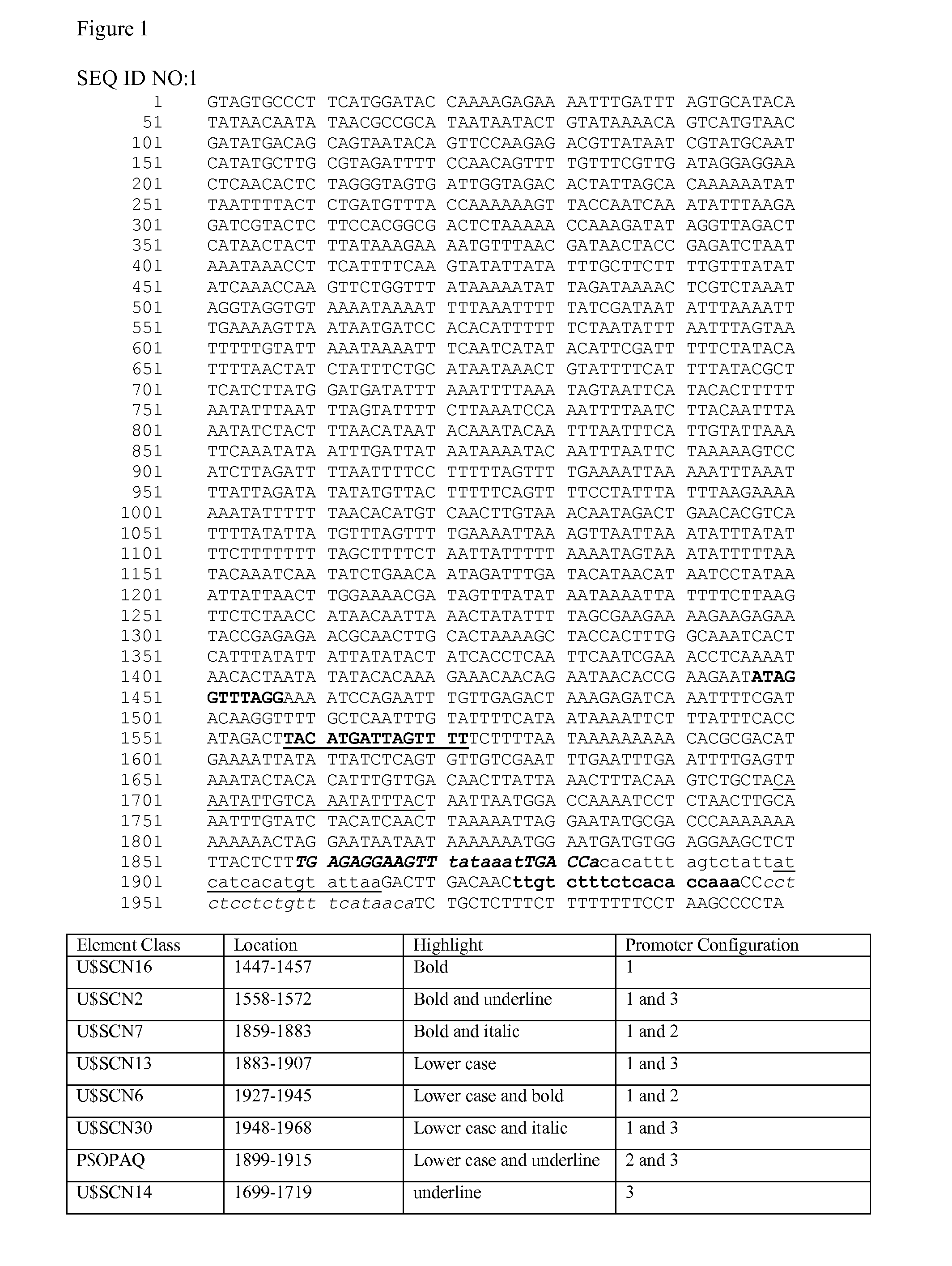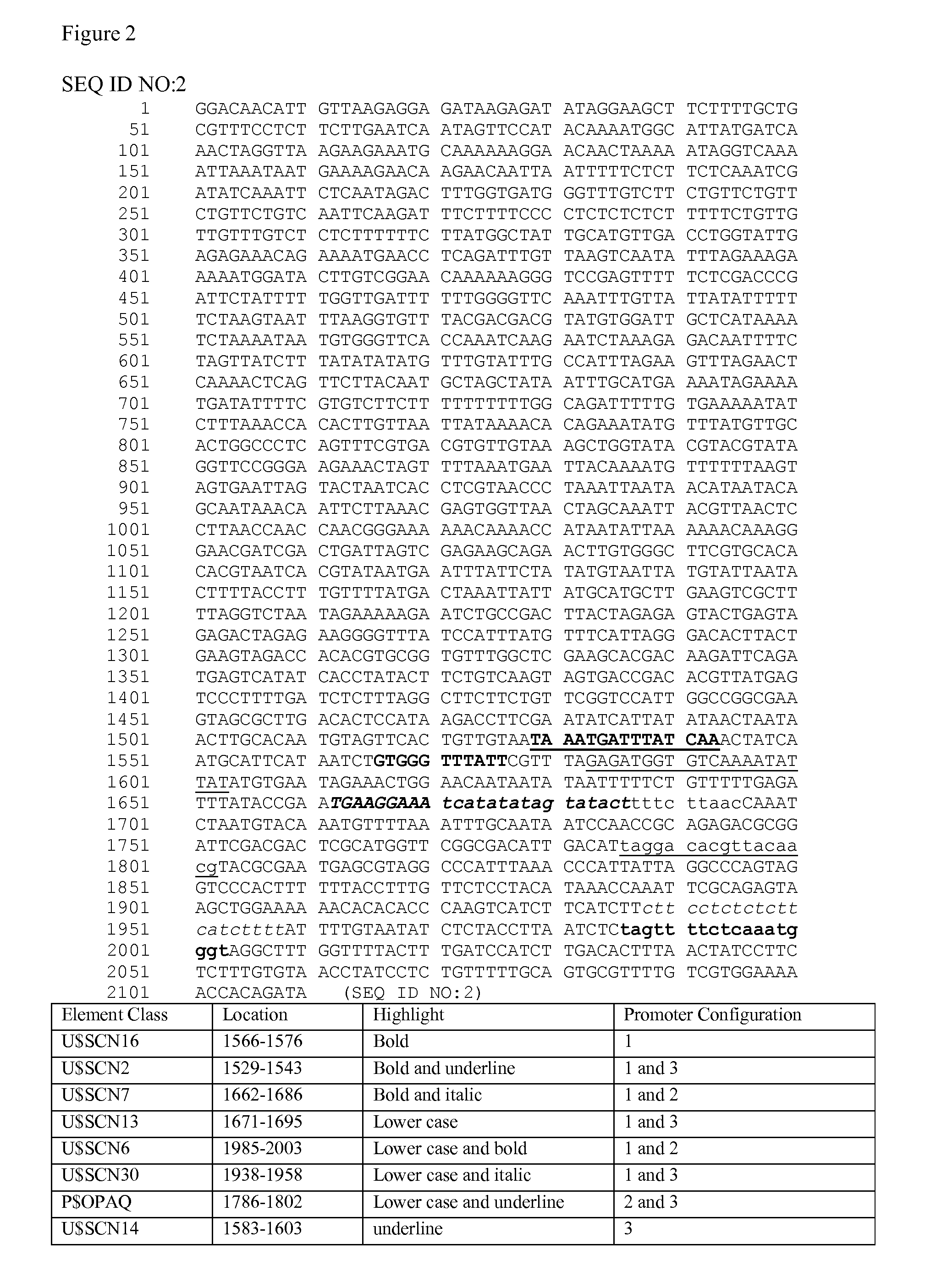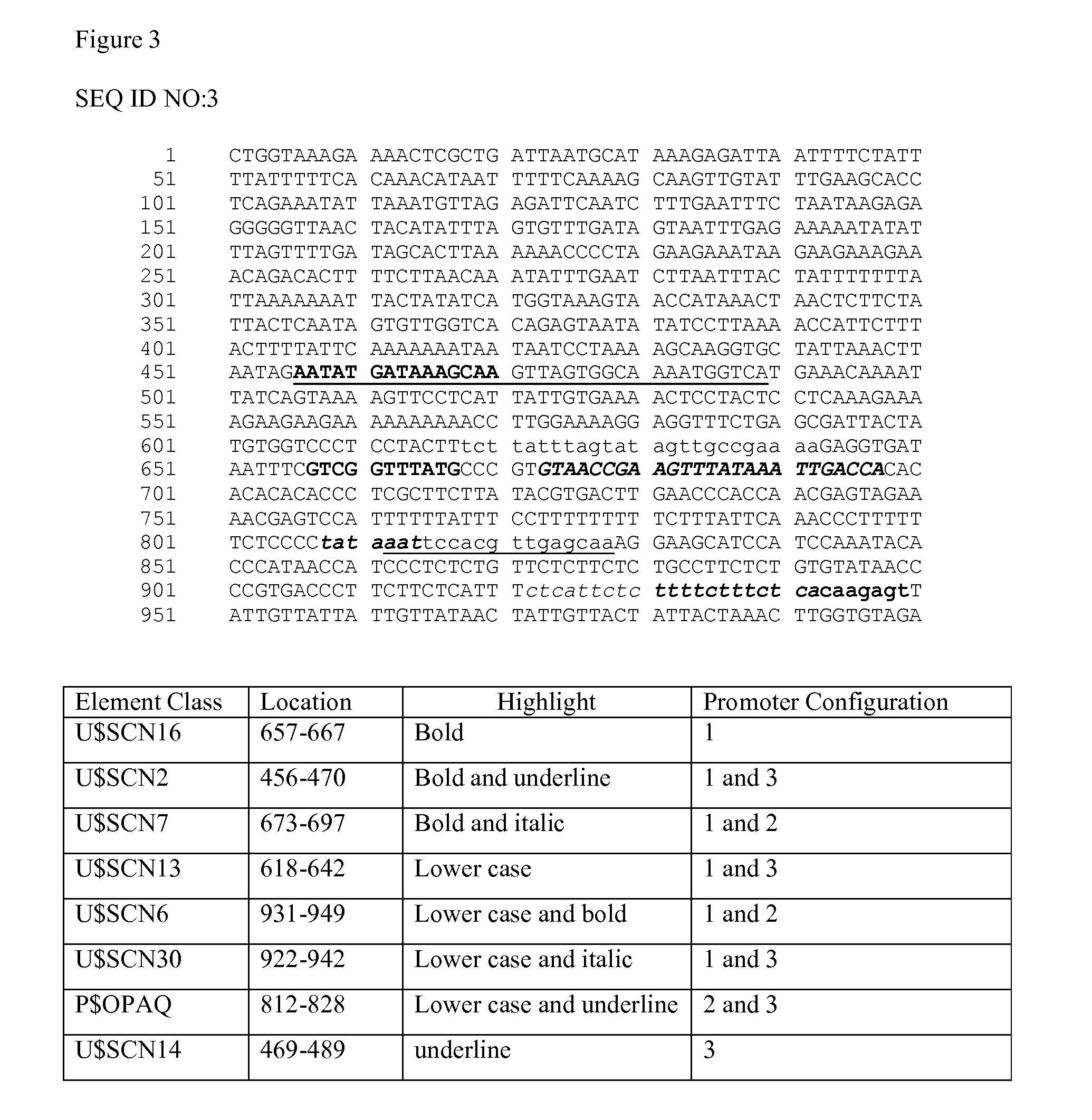Pathogen inducible plant thehalose-6-phophate phophatase gene promoters and regulatory elements
a technology of pathogens and promoters, applied in the field of promoters and regulatory elements, can solve the problems of plant natural defense mechanisms against pathogens that are often insufficient, the most of the approaches described only offer resistance, and the loss of many billions of us dollars in annual yield. to achieve the effect of improving plant resistan
- Summary
- Abstract
- Description
- Claims
- Application Information
AI Technical Summary
Benefits of technology
Problems solved by technology
Method used
Image
Examples
example 1
Cloning TPP-Like Gene Promoters from Soybean
[0115]Soybean Glycine max cv. Williams 82 seeds were germinated on 1% agar plates for 3 days at 25° C. and transferred onto germination pouches with one seedling per pouch. One day later, each seedling was inoculated with 1000 second-stage juveniles (J2) of Heterodera glycines race3. The seedlings were maintained at the same culturing condition. The position of the root tip was marked on the pouch. One day after inoculation, the seedling was taken out and rinsed in water to remove remaining nematodes on the surface, and then transferred onto a new pouch, and the position of the root tip was marked on the pouch.
[0116]Six days after inoculation, the root portion between the two marks was sliced into 1 cm long pieces with a razor blade and immediately fixed in a solution containing 3 parts of ethanol and 1 part of glacial acidic acid. The solution was vacuumed at 400 mm Hg for 15 minutes twice and then kept on ice for 4-8 hours. The root piec...
example 2
Cloning Trehalose-6-Phosphate Phosphatase (TPP) Promoters from Arabidopsis
[0136]The Arabidopsis At1g35910 and At5g10100 genes were selected based on their similarity to the soybean cDNA sequence indicated in Example 1. Arabidopsis (Columbia ecotype) genomic DNA was extracted using the Qiagen DNAeasy Plant Minikit (Qiagen, Valencia, Calif., US). The 1,999 bp (SEQ ID NO:1) and 2,110 bp (SEQ ID NO:2) genomic DNA regions (putative promoter sequences) directly upstream of the ATG codon including 5′-untranslated region corresponding to Arabidopsis trehalose-6-phosphate phosphatase-like genes with locus identifiers, Atlg35910 and At5g10100 respectively, were cloned using standard PCR amplification protocols. For this, approximately 0.1 μg of Arabidopsis genomic DNA was used as the DNA template in the PCR reaction. The primers used for PCR amplification of the Arabidopsis promoter sequences are shown in FIG. 9 and were designed based on the Arabidopsis Genomic sequence Database (TAIR). The...
example 3
Binary Vector Construction for Transformation and Generation of Transgenic Hairy Roots
[0139]To evaluate the expression activity of the cloned promoters, gene fragments corresponding to nucleotides 1-1999 of SEQ ID NO:1, nucleotides 1-2110 of SEQ ID NO:2 and nucleotides 1-1000 of SEQ ID NO:3 were cloned upstream of a GUS reporter gene (bacterial β-glucuronidase or GUS gene (Jefferson (1987) EMBO J. 6, 3901-3907) to create the binary vectors pAW284qcz, pAW281qcz, and RAW403, respectively. The plant selectable marker in the binary vectors is a herbicide-resistant form of the acetohydroxy acid synthase (AHAS, EC 4.1.3.18, also known as acetolactate synthase or ALS) gene from Arabidopsis thaliana (Sathasivan et al., Plant Phys. 97:1044-50, 1991). ARSENAL (imazapyr, BASF Corp, Florham Park, N.J.) was used as the selection agent.
[0140]In the present example, binary vectors pAW284qcz, pAW281 qcz, and RAW403qcz were transformed into A. rhizogenes K599 strain by electroporation (Cho et al., (...
PUM
| Property | Measurement | Unit |
|---|---|---|
| pH | aaaaa | aaaaa |
| pH | aaaaa | aaaaa |
| temperature | aaaaa | aaaaa |
Abstract
Description
Claims
Application Information
 Login to View More
Login to View More - R&D
- Intellectual Property
- Life Sciences
- Materials
- Tech Scout
- Unparalleled Data Quality
- Higher Quality Content
- 60% Fewer Hallucinations
Browse by: Latest US Patents, China's latest patents, Technical Efficacy Thesaurus, Application Domain, Technology Topic, Popular Technical Reports.
© 2025 PatSnap. All rights reserved.Legal|Privacy policy|Modern Slavery Act Transparency Statement|Sitemap|About US| Contact US: help@patsnap.com



